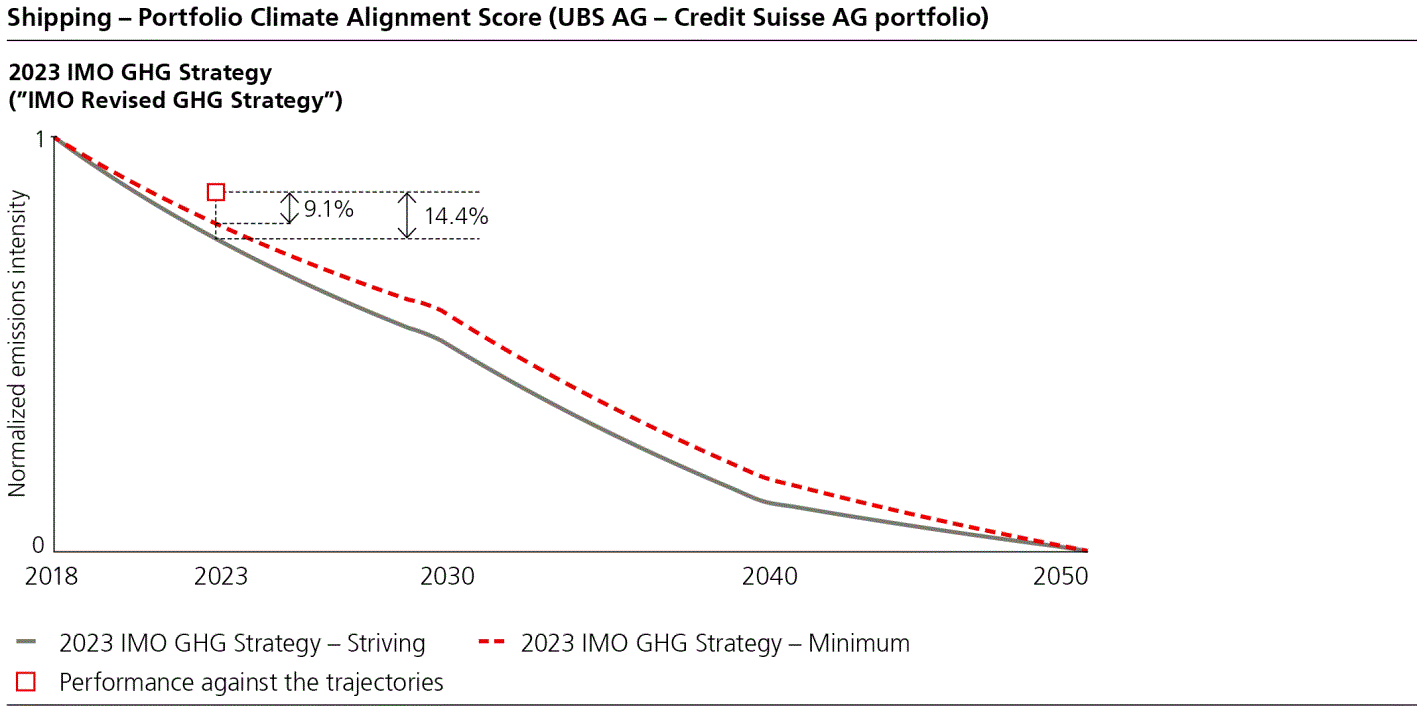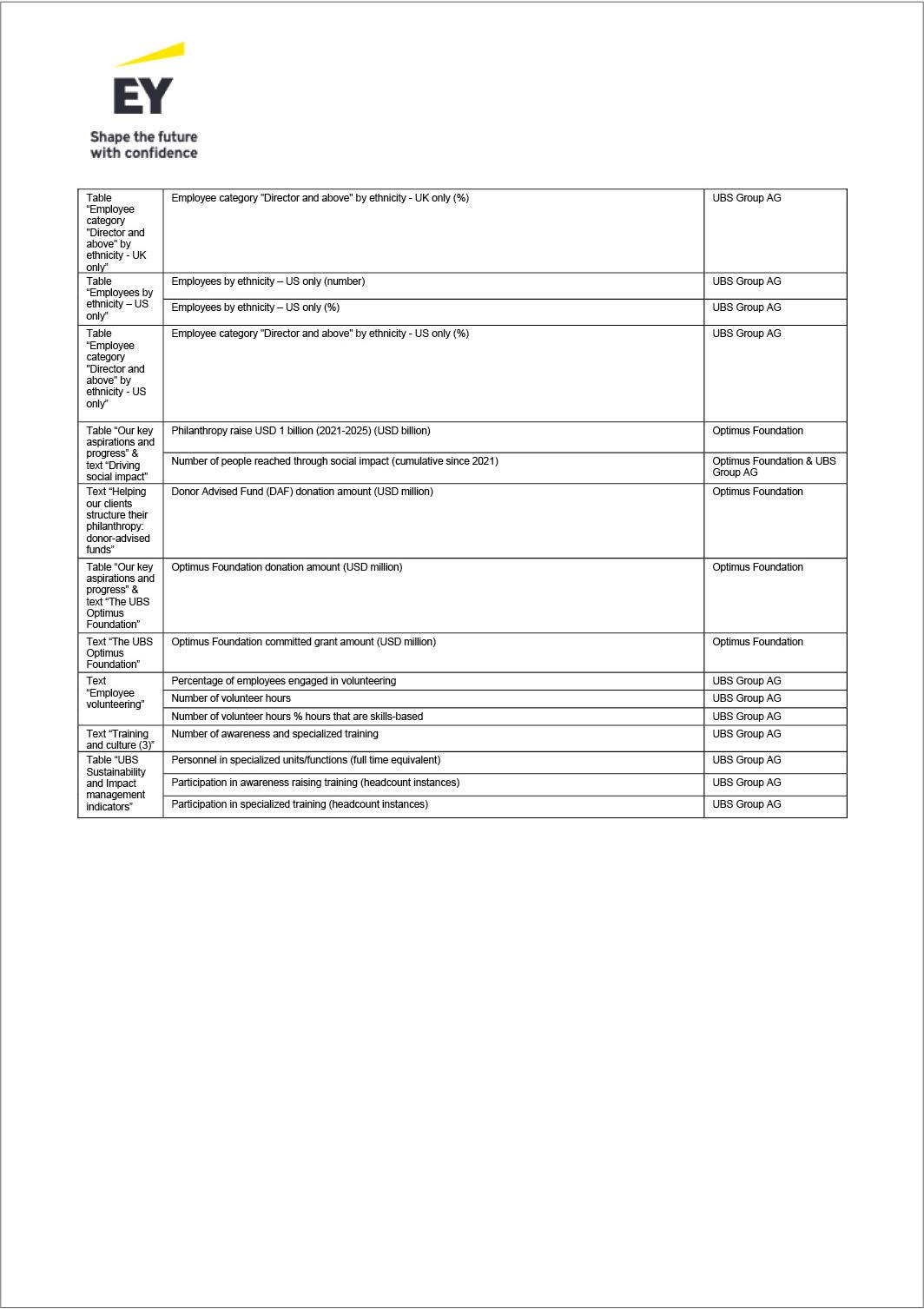Sustainability Report 2024
| Managing sustainability and climate risks
95
Risk management and control
In 2024,
we continued
to develop
solutions to
integrate sustainability
and climate
risks into
traditional risk
categories,
such as our credit, market,
liquidity, non-financial and reputational risk frameworks. We
progressively enhanced our four-
stage approach (defined above in
the sustainability and climate risk
management framework) by leveraging
research on
how sustainability and climate
risk drivers may be
transmitted to our clients
(and their assets)
and ultimately to
the firm
in the form
of financial
and non-financial
risks. Our
approach supports
the ongoing
management of
sustainability and
climate risks as
they manifest
across traditional risk
categories and has
been built in
line with principles
outlined by the
Basel
Committee
on
Banking
Supervision
(the
BCBS)
and
the
Task
Force
on
Climate-related
Financial
Disclosures
(the
TCFD,
now
organized
under
the
ISSB).
As
Swiss
financial
regulator
FINMA
has
mandated
financial
institutions
to
implement
nature-related
financial
risks
in
their
due
diligence
processes
by
2028
(FINMA
Circular
2026/1
on
nature-
related
financial
risk),
UBS
is
building
its
capabilities
to
embed
the
management
of
these
risks
in
its
due
diligence
processes.
Our progress is summarized in the following table.
Managing sustainability and climate risks
within traditional risk categories
Traditional risk
Sustainability and climate risk
transmission channels.
Key developments
Our potential credit losses driven by
risks from a changing physical climate,
the transition to a low-carbon
economy.
Climate-related risk drivers can impact
household, corporate or sovereign
income and / or wealth. Physical and
transition risk drivers increase our
potential losses as soon as they have a
negative effect on a borrower’s ability
to repay and / or fully recover the value
of a loan in the event of default.
In 2024, we further embedded climate-related
risks into our credit risk management framework.
By collaborating
across business divisions and between both the first and second
lines of defense, we developed innovative
solutions tailored to the risk profiles and material drivers of
risk within our businesses:
Investment Bank:
The current credit-granting process has been amended to identify and
measure the potential for
credit losses driven by climate-related risks for corporate lending and
leveraged finance. At the transaction level,
this is achieved by integrating tools such as sector-level climate-related
risk heatmaps and company-level due
diligence scorecards into the credit approval analysis and decision-making
process. In addition, where mandated,
concentration triggers have been set up and are monitored and reported
on a quarterly basis for all relevant
counterparties. Furthermore, at the divisional level, progress has been made to enhance
and automate reporting of
the full Investment Bank lending portfolio, on a quarterly basis.
Global Wealth Management:
The current credit-granting process identifies and assess potential
credit losses driven
by climate-related risks for Lombard lending in Switzerland
and international locations by integrating climate-
related due diligence questions and leveraging the climate risk heatmaps
in the credit assessment at a transaction
level. The approach encompasses Lombard loans to operating companies
and those backed by concentrated equity
posted as collateral and we aim to further enhance the scope across
regions and products in future. Furthermore,
progress was made to enhance and automate reporting of
the combined Global Wealth Management Lombard
lending portfolio, on a quarterly basis.
Personal & Corporate Banking:
The current credit-granting process identifies and assesses potential
credit losses
driven by climate-related risks by integrating climate-related due diligence
questions and leveraging the climate
risk heatmaps in the credit assessment at a transaction level. This approach was rolled
out in 2023 to the P&C
Multinationals business and expanded in 2024 to include
a wider coverage of the corporate client portfolio as well
as the commodity trade finance business. Furthermore, at the divisional level progress was made to
enhance and
automate reporting of the combined Personal and Corporate lending portfolio, on a quarterly basis.
Market risk
(traded and
Potential financial impacts on the firm
from price shifts and / or market
volatility. A changing physical
environment (including climate
change) may affect the value of
companies reliant on the natural
environment and / or how the market
perceives such companies. The
transition to a low-carbon economy
through climate policies, low-carbon
technologies, demand shifts and / or
market perception may also impact the
value of our positions and / or lead to
a breakdown in correlations between
risk factors (e.g. prompting a change
in market liquidity and / or challenging
assumptions in our model).
In 2024, we assessed the risk from planned portfolios, in line with our multi-year
sustainability and climate risk
initiative, and established solutions for integrating climate-related risks into our market risk management
framework. Progress on integrating climate-related risks into our market risk management
was incrementally
driven by enhancing analytical capacity, applying the climate risk rating model
in our market-risk monitoring
systems and developing stress testing capabilities. We have adapted our in-house
long-term scenarios to the
specifics of short-term market risk analytical requirements.
Enhancing analytical capacity:
Leveraging existing sector-level heatmap methodologies
and our in-house scenario
development capacity, we sought to perform a loss-driven materiality assessment.
By linking the risk ratings with
adverse-scenario-driven shocks, we were able to further examine the correlations
between risk factors and
understand the short-term loss potentials for climate. In 2024, we were
able to introduce a climate risk rating
model for the first time.
Automation:
Market risks systems facilitate for daily monitoring, reporting and control.
By integrating these with
our centralized climate sector-level heatmap together with climate
risk rating model, we are able to understand
and react to drivers of climate impacts on our portfolios
through regular assessments and monitoring.
Quantitative risk appetite:
For selected legal entities, climate risk concentration triggers were introduced in 2023
based on the sector-level climate risk heatmaps.
The solution facilitates daily monitoring of positions that are
considered inherently sensitive to climate risks, including an automated
breach escalation process along with the
market risk escalation path for concentration limits, providing an opportunity for remediation
actions. The triggers
cover credit delta and equity delta aggregated in accordance with the “sensitivity,” as defined through our | Managing sustainability and climate risks 96



















































